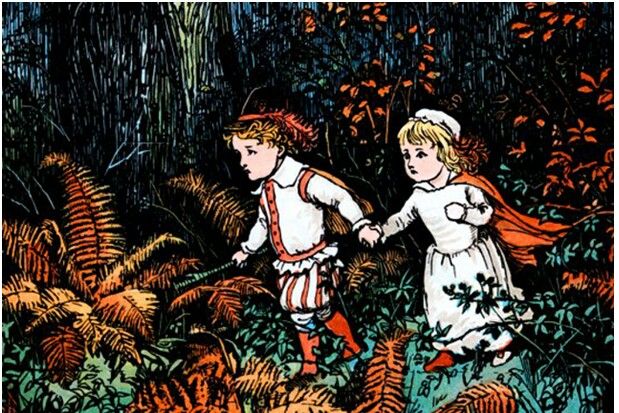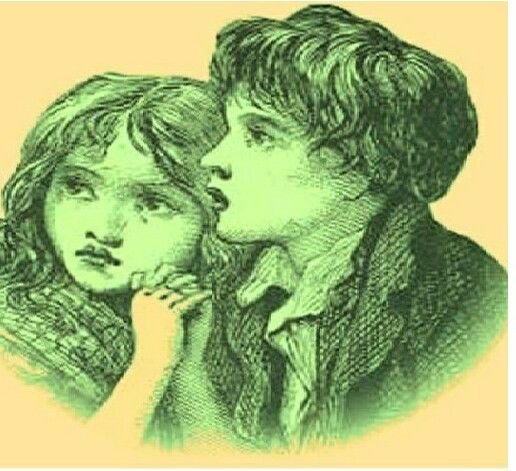Walk down memory lane: The Green Children of Woolpit
**THE GREEN CHILDREN OF WOOLPIT **
Once upon a time, sometime in the 12th century, in a little village called Woolpit-which is located in Suffolk, England, two children popped out of nowhere, as we were told. Oh, did I mention they were green?
Mhmm, probably the ancestors of the Incredible Hulk!
The problem was that it wasn’t just a story, according to many accounts. They swear it did happen. But as it is with any event, there are always multiple versions.

WIKIMEDIA COMMONS // PUBLIC DOMAIN(source)
William of Newburgh‘s Historia rerum Anglicarum and Ralph of Coggeshall‘s Chronicum Anglicanum, written in c. 1189AD and c. 1220AD respectively are the major authorities, from which much of what we know is gathered from.
William was a canon and historian at the Augustinian Newburgh Priory, far to the north in Yorkshire. According to William, his account in Historia rerum Anglicarum is based on “reports from a number of trustworthy sources”.
Ralph was the abbot of a Cistercian monastery at Coggeshall, which was about 26 miles (42 km) south of Woolpit. Ralph’s version of the story incorporates information gotten from Sir Richard de Calne, who reportedly took care of the children.
The writers stated that the events took place within the reign of King Henry II (1154-1189) or King Stephen (1135-54), depending on whom you choose to believe.
THE STORY
Back then, it was common practice for villagers to dig wolf pits-to trap/capture wolves. So on getting to one of the wolf pits (which is how the village got its name, as the story goes), they saw two little kids-a boy and a girl in one of the pits. It was said that they spoke a language, which was indeed strange to the villagers. They looked like every other boy or girl, save for the color of their skin, and the strange clothes they had on.
According to Ralph, they were taken to the house of Richard de Calne of Wykes.
Both major authorities, Ralph and William agree that the children refused to eat for several days when they were offered bread and meat. They only ate hungrily, when they were offered or saw beans.
In time, the children got used to the way of life in the village, and they began to eat ‘normal’ food. In doing this, they lost their green coloring.
Sometime later, the kids were both baptized, and it is said that the boy-who was younger became sickly a little while after that, and died within that period.
The girl (who later went by the name, Agnes) would live on, and got integrated into society. She learnt English, and told the people that she was from a place named St. Martins Land, an underground city of some sorts (subterranean), where there was no sunlight-it was always twilight there. The inhabitants of the place were also green like her and her brother.
The habitation was bordered by a river, and there was some sort of shiny town, beyond the river, she further said.
The girl claimed they were tending to her father’s cattle when they discovered a cave. They entered the narrow opening, crawling deeper into the darkness for a long time until they came out the other side, entering into bright sunlight, which got them startled. It was then that they stumbled into the pit, which was most likely too high for them to climb out of.
Williams account says she got married to a man named Richard Barre, from King’s Lynn, not far off from Woolpit.
Whereas, according to Ralph, the girl was employed for many years as a servant in Richard de Calne’s household, where she was considered to be “very wanton and impudent”.
EXPLANATION
On the one hand, there are those who see this story as folklore that describes an imaginary encounter with inhabitants of another world beneath, or even extraterrestrial. Others accept it as a real, but somewhat altered account of an event that actually occurred.
English anarchist poet/critic Herbert Read praised the story as an ideal fantasy, in his English Prose Style, published in 1931. It was also the source of inspiration for his only novel, The Green Child.
Duncan Lunan, an astronomer hypothesized that the children were accidentally transported from their home planet as the result of a “matter transmitter” malfunction.
Many theories have also been put forward to explain their color. One theory proposes that they were the children of Flemish immigrants who were persecuted and killed—probably in the battle at Fornham in 1173. Fornham St. Martin was a nearby village, separated from Woolpit by a river named Lark, and it was just a few miles from Bury St. Edmunds, where loud bells often chimed. It’s possible that the children had been orphaned, suffered a poor diet while lost and on their own, and eventually made their way to Woolpit from Fornham St. Martin by following the clanging bells. If they had fled into Thetford Forest, it may have seemed like permanent twilight to the frightened children. They may also have entered one of the many underground mine passages in the area, which finally led them to Woolpit. Dressed in strange Flemish clothes and speaking another language, the children would have presented a very strange spectacle to the Woolpit villagers.
Brian Haughton considers the explanation above as plausible. This is the most widely accepted version-although, it leaves some questions left to be answered as well. For instance, he suggests it is unlikely that an educated local man like Richard de Calne would not have recognized the language spoken by the children as being Flemish.
Another story postulates that they were suffering from Hypochromic Anemia, originally known as Chlorosis (from the Greek word ‘Chloris’, which means greenish-yellow). The condition arises as a result of having a very poor diet, and it affects the color of the red blood cells and results in a noticeably green shade of one’s skin.
In support of this theory is the fact that the girl is described as returning to a normal color after adopting a healthy diet.
Yet another story says the children had arsenic poisoning. The story goes that their caretaker, an earl from Norfolk, left them to die in a forest near the Norfolk-Suffolk border.

Artist’s depiction of the Green Children of Woolpit ( Image source )
The story of the green children has lived on for over eight centuries since the earliest accounts. While the real facts behind the story may never be known, it has been the inspiration behind numerous works of fiction, and continues to leave many, baffled.
Made-up, real or mixed up facts? The decision is yours. Whatever the truth is-and we would most likely never know, we cannot deny that fact that it is a very intriguing story.

Try Our Service Before Buy🎁
we have paid service too so please check them too. Active the free upvote service and learn more about it here : JOIN NOW CLICK HERE
To listen to the audio version of this article click on the play image.

Brought to you by @tts. If you find it useful please consider upvote this reply.